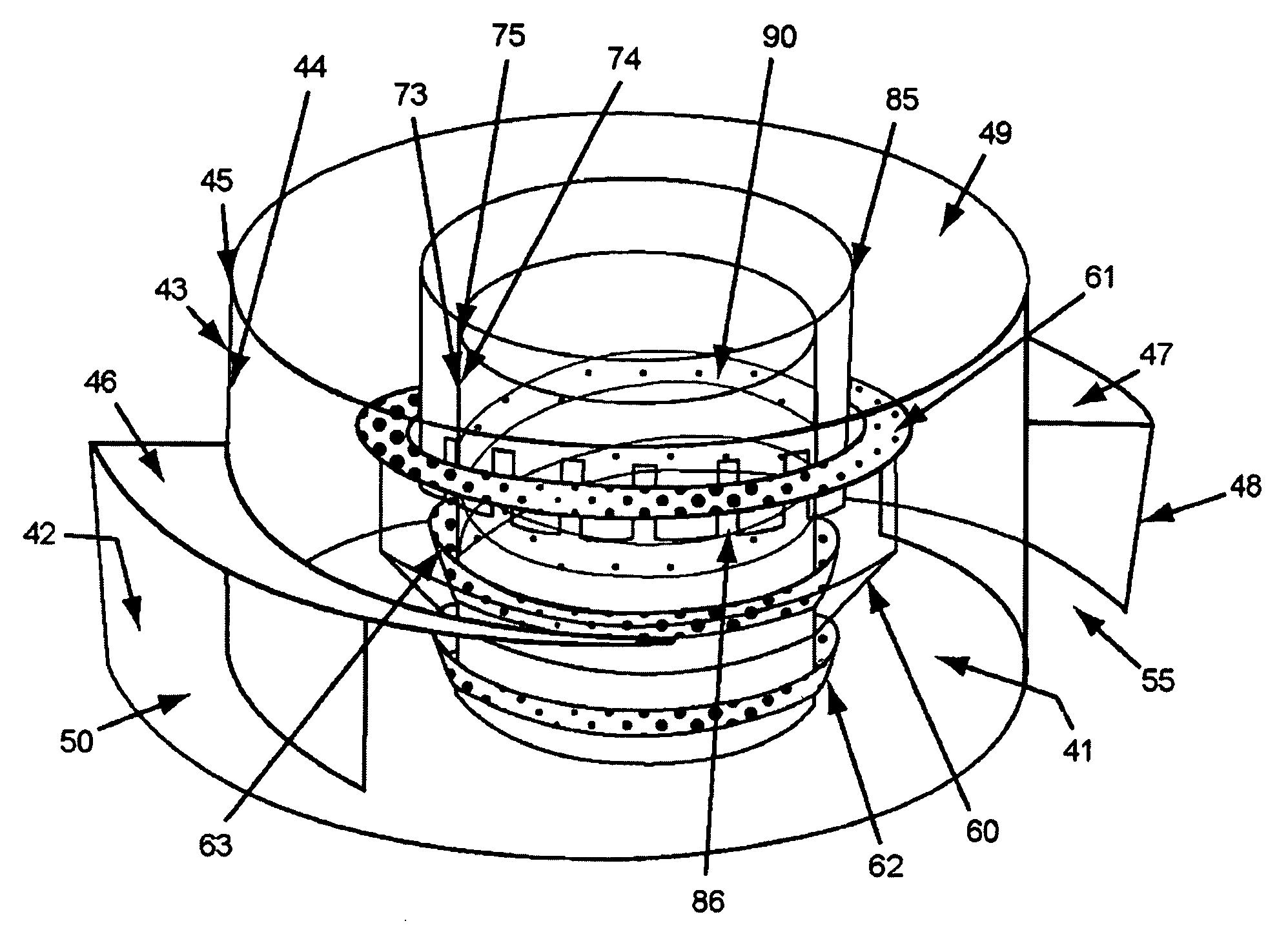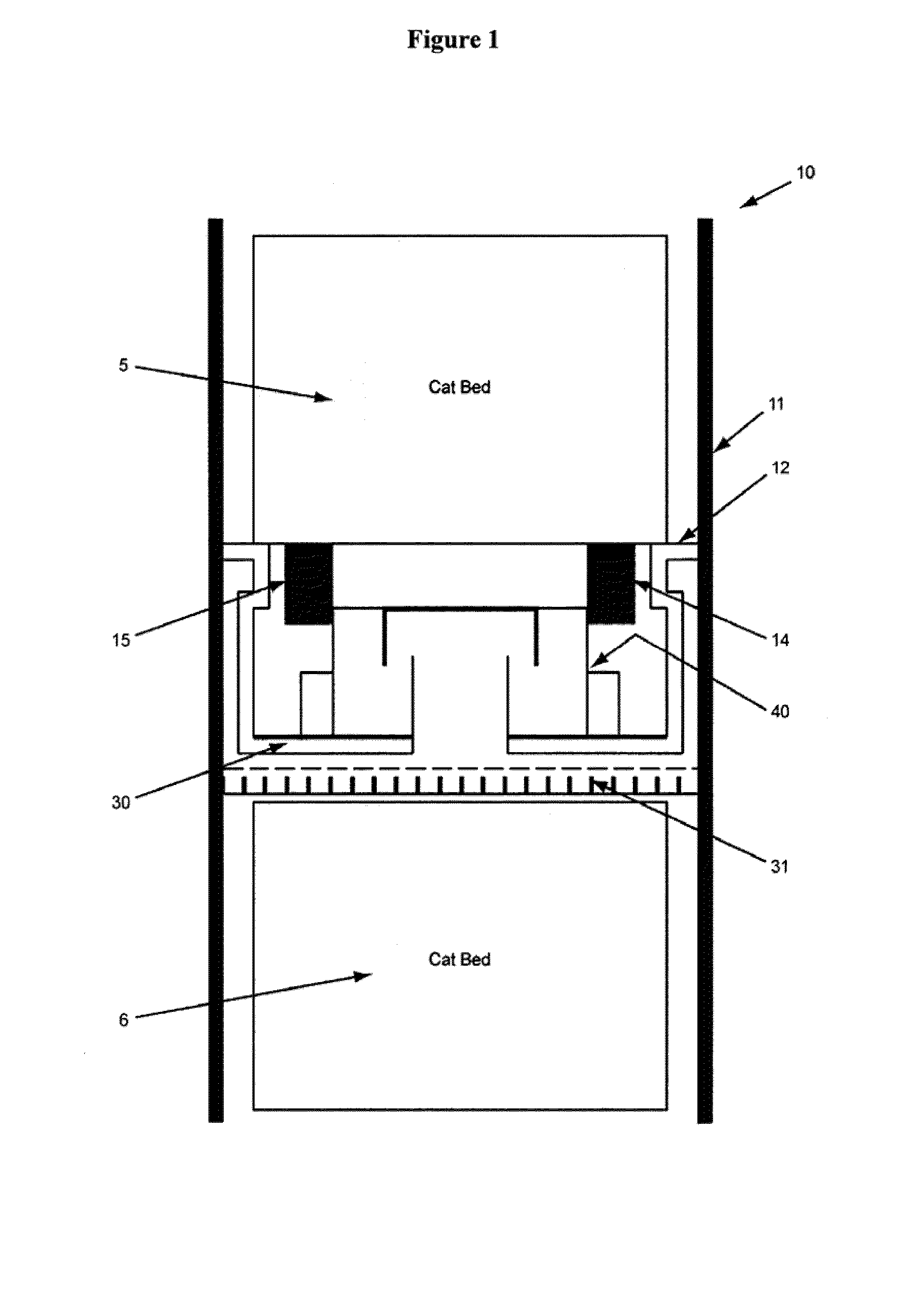Mixing device for a down-flow reactor
a hydroprocessing reactor and mixing device technology, applied in the direction of solvent extraction, physical/chemical process catalysts, separation processes, etc., can solve the problems of limiting the operation of the reactor in various ways, and reducing the efficiency of the hydroprocessing reactor. , to achieve the effect of improving the effectiveness improving the efficiency of the existing mixing volume, and small siz
- Summary
- Abstract
- Description
- Claims
- Application Information
AI Technical Summary
Benefits of technology
Problems solved by technology
Method used
Image
Examples
Embodiment Construction
[0016]In an embodiment, the mixing device of the invention is centrally disposed on top of the collection plate and between the catalyst support beams. The mixing device of the invention has at least one inlet for receiving fluids from the trough. In an embodiment, the mixing device has two inlets to receive fluids from the collection plate. The use of two inlets oriented at 180 degrees from each other with their openings situated so as to reinforce the circular, swirling motion of the incoming fluids improves the turbulence effect of the mixing device design.
[0017]As shown in FIG. 1, a multi-bed, down-flow reactor 10 has a cylindrical sidewall 11. The section shown in FIG. 1 is a cross section of a multi-bed catalytic reactor. Each catalyst bed, 5 and 6, contain packed particulate catalytic material. Each catalyst bed is supported on a grid screen assembly 12 comprised of a support grid, space cloth and wire screen, all of which are well known in the art. The grid screen assembly i...
PUM
| Property | Measurement | Unit |
|---|---|---|
| temperature | aaaaa | aaaaa |
| angle | aaaaa | aaaaa |
| height | aaaaa | aaaaa |
Abstract
Description
Claims
Application Information
 Login to View More
Login to View More - R&D
- Intellectual Property
- Life Sciences
- Materials
- Tech Scout
- Unparalleled Data Quality
- Higher Quality Content
- 60% Fewer Hallucinations
Browse by: Latest US Patents, China's latest patents, Technical Efficacy Thesaurus, Application Domain, Technology Topic, Popular Technical Reports.
© 2025 PatSnap. All rights reserved.Legal|Privacy policy|Modern Slavery Act Transparency Statement|Sitemap|About US| Contact US: help@patsnap.com



